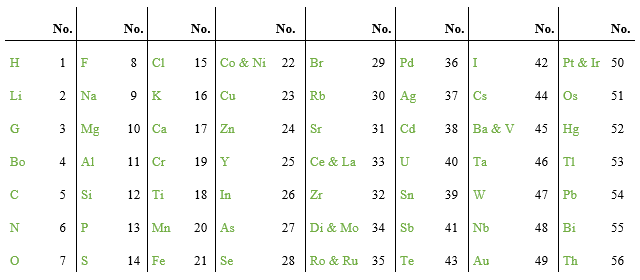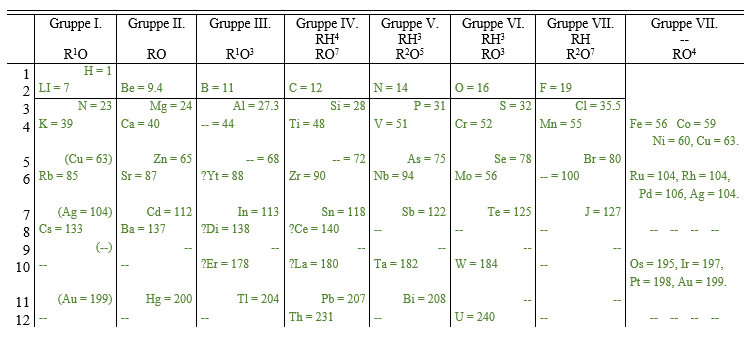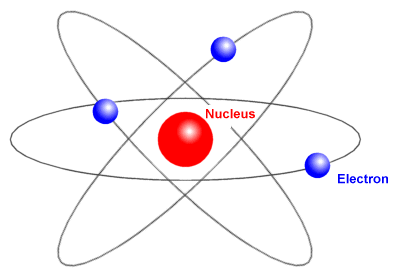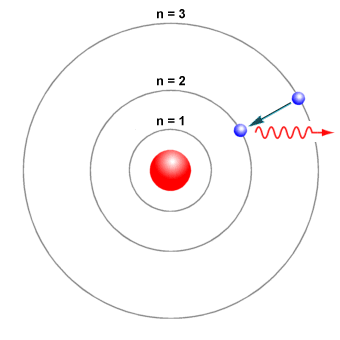| Author: | |
| Website: | |
| Page title: | |
| URL: | |
| Published: | |
| Last revised: | |
| Accessed: |
The idea that matter is made from tiny particles goes back well over two thousand years. It is thought that the concept of the atom was originally conceived by the Greek philosopher Leucippus during the early part of the fifth century BCE, although it is also sometimes accredited to his pupil Democritus. It would be hundreds of years, however, before these ideas could be backed up by experimental data.
The Anglo-Irish scientist Robert William Boyle (1627 - 1691), considered by some to be one of the founders of modern chemistry and probably best known for his ideas about the relationship between volume, pressure and temperature in gases, firmly endorsed the view that chemical elements were the fundamental constituents of all physical materials, and recognised the distinction between chemical elements and compounds (collectively classed as substances) and mixtures thereof. He also supported the view that elemental substances were composed of particles of various kinds, although he seems to have been reluctant to speculate on the exact nature of these particles.
The beginning of the nineteenth century saw real advances in our understanding of matter. In 1805, the English scientist John Dalton (1766-1844) published one of several papers outlining his theories on the behaviour of gases, at the end of which he puts forward a number of ideas about the nature of chemical elements, and their role in chemical reactions, in what is considered by many to be the first coherent atomic theory of the modern scientific age. The main points of Dalton's atomic theory can be summarised as follows:
By the year 1864, scientists had identified over sixty elements, with new elements being discovered at the rate of about one per year. Some of these elements (metals such as tin and zinc, for example) had been known about since ancient times, probably because of the ease with which they could be extracted from the earth. Other elements were discovered as the result of painstaking experiment - and occasionally by accident.
One approach to classifying the known elements is to order them according to their atomic weight, which we refer to today as relative atomic mass. The British chemist John Alexander Reina Newlands (1837-1898) was probably the first person to create a table of chemical elements ordered according to their relative atomic mass. Newlands had noticed that when he listed the elements in this way, elements occurring seven places apart in the list seemed to behave in a similar way. He therefore arranged the elements into seven rows of eight columns. We have reproduced Newland's table below.

Newland's table of chemical elements
In 1865, Newlands published his Law of Octaves, in which he stated that "any given element will exhibit analogous behaviour to the eighth element following it in the table". The title reflects the way in which Newlands likened each grouping of eight elements to an octave of music. Newlands seemed to have discovered a periodic pattern in the characteristics of the elements, but his ideas were initially rejected by his contemporaries. It was not until many years later that the significance of his work was formally acknowledged.
The next major contribution came from the Russian chemist and inventor Dmitri Ivanovich Mendeleev (1834-1907). Mendeleev was attempting to classify the elements according to their chemical properties. Despite the fact that he appears to have been unaware of the work done by Newlands, he too began to notice that elements with similar characteristics seemed to occur at regular intervals when ordered according to their atomic weight.
Mendeleev claimed to have had a dream in which he had envisioned a table containing all of the elements in their natural order, and that upon waking he had immediately committed what he had seen to paper. Mendeleev formally presented his findings to the Russian Chemical society in 1869. Mendeleev had discovered that the atomic weights of elements with similar properties were either very close (as, for example, in the case of osmium, iridium and platinum) or increased by regular intervals (as in the case of calcium, rubidium and caesium).
Mendeleev suggested that the atomic weight of an element could be used to predict its chemical properties. He also suggested that there were a number of as yet unknown elements waiting to be discovered. These claims were later justified when he accurately predicted both the existence and the chemical properties of germanium, gallium and scandium (which he called ekasilicon, ekaaluminium, and ekaboron respectively). Mendeleev's periodic table (which he called "the Periodic System") was published in 1871, and is reproduced below.

Mendeleev's periodic table
Since Mendeleev published his periodic table, many new elements have been discovered, and the periodic table has evolved to allow for new groupings of chemical elements. Nevertheless, Mendeleev's work forms the basis for the periodic table we use today. In the modern periodic table, the elements are organised according to their relative atomic mass, electron configuration and chemical properties. The rows in the table are called periods. The columns are called groups.
John Dalton's contention that atoms could not be created, destroyed, or broken down into smaller parts was proved false in 1897, when English physicist Joseph John Thompson (1856-1940) demonstrated that cathode rays were composed of negatively charged particles with a mass many hundreds of times smaller than that of a hydrogen atom. Thompson called this newly discovered particle a "corpuscle". It was the first sub-atomic particle to be discovered. We know it today as the electron.
Thompson soon realised that these particles were identical to those emitted by radioactive materials, and that they were also the particles that made it possible for electric current to flow in a conductor. He correctly theorised that atoms must be made up of a number of smaller (sub-atomic) particles that included electrons. However, his assumption that the negatively charged electrons were scattered throughout the atom in a kind of "sea" of evenly distributed positive charge (a concept known as the plum pudding model) was later shown to be false.

Thompson's "plum pudding" model of the atom
In a 1909 experiment, the German physicist Johannes Wilhelm Geiger (1882-1945) and the English-born New Zealand phycisist Ernest Marsden (1889-1970), working under the direction of New Zealand physicist Ernest Rutherford (1871-1937), bombarded a thin sheet of gold foil with a narrow beam of alpha particles emitted by radium bromide. A screen coated with zinc sulphide (which emits a detectable flash when an alpha particle collides with it) was used to detect the alpha particles as they passed through the foil.
If Thompson's plum pudding model was correct, the dispersed positive charge in the atoms of the gold foil should have been too weak to significantly deflect the positively charged alpha particles. In fact, Geiger and Marsden observed alpha particles being deflected at angles of more than ninety degrees (90°). Rutherford deduced that, rather than being evenly distributed, all of the positive charge must be concentrated in a tiny nucleus at the centre of the atom.
In 1913, the Danish physicist Niels Henrik David Bohr (1885-1962), together with Ernest Rutherford, proposed a model of the atom in which the electrons in an atom were in orbit around its nucleus, in much the same way that the planets in our solar system are in orbit around the Sun. One obvious difference is that, whereas the force holding a planet in its orbit around the Sun is gravity, the force holding an electron in orbit around the nucleus of an atom is electrostatic in nature.

The "planetary" model of the atom
Rutherford had already established a model of the atom in which a diffuse cloud of negatively charged electrons surrounded a small, dense and positively charged nucleus. The Rutherford-Bohr model refined this idea. Bohr suggested that the electrons occupied fixed, circular orbits around the nucleus of the atom.
This idea brought with it a new set of problems for physicists. According to the laws of classical physics, an electron orbiting a nucleus should experience acceleration. When a charged particle (such as an electron) accelerates, it emits energy in the form of electromagnetic waves. An electron orbiting the nucleus of an atom could therefore be expected to lose energy, and its orbit to decay as a consequence. If that were to happen, the atom would quickly become unstable.
There was no evidence, however, that this was happening. The experimental data seemed to indicate that electron orbits were stable. Bohr explained this by suggesting the electrons occupied "stationary orbits", each of which lay at a specific distance from the nucleus. Electrons could jump from a lower orbit to a higher orbit by absorbing electromagnetic radiation, thus gaining a discrete amount (or quantum) of energy. When electrons jumped from a higher orbit to a lower orbit, they emitted electromagnetic radiation, thereby relinquishing a quantum of energy.

In the Rutherford-Bohr model of the atom, electrons move in defined orbits, and jump between them by emitting or absorbing electromagnetic energy
The Rutherford-Bohr model has since been proven not to be an accurate model of the atom, but it is still commonly taught because it is a good way to introduce students to the principles of quantum mechanics. The German theoretical physicist Werner Karl Heisenberg (1901-1976) and the Austrian physicist Erwin Rudolf Josef Alexander Schrödinger (1887-1961) independently developed equivalent theories that suggested that, rather than travelling around the nucleus in neat orbits as suggested by Bohr, the electrons moved in a far more random fashion.
The model that emerged from the work of Heisenberg and Schrödinger is sometimes called the electron cloud model. In this model, the position of an electron within the cloud at any given time cannot be known with any certainty, although we can define a number of atomic orbitals - specific regions within the three-dimensional space occupied by an atom - in which the electrons are most likely to be found. The number and shape of the atomic orbitals in an atom of a particular element will depend on the element's position in the periodic table. The movement of electrons between orbitals depends upon how fast they are moving, and how many other electrons there are.
By the late nineteenth century, scientists had developed techniques for measuring the mass of atoms by using a magnet to deflect a stream of ions. Such techniques typically produce ions by bombarding a sample of an element with electrons. The ions are then channelled into a beam, which is directed through a magnetic field. The amount by which the beam is deflected by the magnetic field can be measured by a detector, and is determined by the mass-to-charge ratio of the ions.
The earliest devices that employed such techniques were called mass spectrographs (the modern equivalent is called a mass spectrometer). The English chemist and physicist Francis William Aston (1877-1945) used a mass spectrograph to establish that atoms of the same element could have different relative atomic masses.
These different versions of the same element were called isotopes, from the Greek words iso (meaning equal) and topos (meaning the same place). The (stable) isotopes of a particular element occupy the same position in the periodic table and exhibit the same chemical properties, despite the fact that each isotope has a different relative atomic mass.
Based on his observations, Aston theorised that the difference in mass between one isotope of an element and another would always be approximately equivalent to an integer multiple of the relative atomic mass of a single hydrogen atom - a theory that subsequently became known as the Aston whole number rule.
This seemed to fit with Prout's hypothesis, named after the English chemist William Prout (1785-1850) who formulated it. Early in the nineteenth century, Prout had observed that the atomic weights recorded for for the known elements were whole number multiples of the atomic weight of hydrogen. Prout concluded that the atoms of elements other than hydrogen must simply be groupings of various numbers of hydrogen atoms, or protyles, as he called them.
Even though Prout's assertion that the hydrogen atom was the only truly fundamental object was eventually proved wrong, his observations posed some interesting questions. Many of the known elements seemed to fit Prout's theory, because their atomic weight was an integer multiple of the atomic weight of hydrogen. As more elements were discovered, however, it became clear that some elements had atomic weights that were not integer multiples of the atomic weight of a hydrogen atom - or even a close approximation thereof.
Aston's work not only proved the existence of different isotopes of the same element, but helped to explain why the observed atomic weights of some some elements were found to differ from their expected values. It was simply due to the fact that the samples used to establish the atomic weight of an element were often made up of two or more naturally occurring isotopes of the same element.
Aston, who eventually identified well over two hundred different isotopes, was awarded the 1922 Nobel Prize in Chemistry for his work. It would be another decade, however, before the true significance of his discovery would be revealed.
Ernest Rutherford had taken a keen interest in Prout’s theories. In 1917, He had managed to "split the atom" by bombarding nitrogen atoms with alpha particles. Many smaller particles were ejected by the collisions which, when Rutherford applied a magnetic field to them, appeared to be hydrogen nuclei.
Rutherford concluded that the nitrogen atoms had disintegrated to become hydrogen atoms, and that the nucleus of all elements consisted of some number of hydrogen nuclei. In 1920, he suggested the name proton for these particles - a name partly derived from Prout's word protyle.
By the late 1920s, many physicists believed the nucleus of an atom to consist of protons and "nuclear electrons". A nitrogen nuclei, for example, was thought to consist of fourteen (14) protons and seven (7) electrons, which would give it an overall positive charge of +7e. The symbol e represents the elementary charge - the positive electrical charge carried by a single proton, and a fundamental physical constant. A single electron carries a negative electrical charge of -1e.
There are several problems with the concept of electrons existing independently within the nucleus of an atom, however. For one thing, the kinetic energy that an electron confined to a region the size of an atomic nucleus could be expected to have would be in the order of twenty million electron volts (20 MeV). In experiments, eletrons emitted during nuclear decay have been found to have no more than three million electron volts (3 MeV) of energy - not enough to account for an electron escaping from a nucleus.
Rutherford had suggested the possibility of a neutrally charged particle with a mass approximately equal to that of a proton in 1920, in order to explain the fact that the atomic number of an atom, which corresponds to the number of (positive) elementary charges present in the atom, was only about half of its mass in atomic mass units. He had originally visualised this particle, which he called a neutron, as the pairing of two particles in the form of an electron closely orbiting a proton. Only later did he come around to the idea that the neutron might be an elementary particle in its own right.
In 1931 two German nuclear physicists, Walther Boethe and Herbert Becker, had discovered that when alpha radiation emitted by polonium was used to bombard samples of lighter elements such as beryllium, boron or lithium, a highly penetrating form of radiation was produced. Since applying an electric field appeared to have no effect on the emitted radiation, the particles - whatever they were - carried no charge.
Boethe and Becker suspected that the unknown radiation was a form of gamma radiation, although it proved to be more penetrating than any previously known form of gamma radiation. Various theories were put forward to explain the results, but there was no immediate concensus.
The Italian theoretical physicist Ettore Majorana (who mysteriously disappeared in 1938 at the age of thirty-seven) correctly surmised that the results indicated the existence of a new particle with mass approximately the same as that of a proton, but with a neutral electrical charge. For reasons best known to himself, however, he never published his findings.
The English physicist James Chadwick (1891-1974) had also been searching for Rutherford's neutron throughout the 1920s, with little success. Nevertheless it was Chadwick, in 1932, who eventually made the breakthrough and was credited with the discovery of the neutron. He was awared the Nobel Prize in Physics for his discovery in 1953.
The nucleus of an atom could now be redefined as consisting of both positively charged protons and electrically neutral neutrons, which explained both its mass and the fact that it had an overall positive charge. The rather tricky problem of trying to explain how significant numbers of electrons could be confined to the nucleus went away. The question of whether the neutron was an elementary particle in its own right, or whether it consisted of an electron bound to a proton in some manner, lingered on for some time, however.
Conventional wisdom dictated that if the mass of the neutron were less than the combined mass of a proton and an electron, then this could well be the case, because the difference in mass would be accounted for by the energy required to bind the electron to the proton. If the mass of the neutron turned out to be greater than that of a proton and an electron combined, then it must be an elementary particle.
The problem was that the mass of an electron is tiny by comparison with that of a proton. It would be some time before the relative masses of these particles could be measured accurately enough to provide a definitive answer. Chadwick was later able to measure the mass of the netron sufficiently accurately to show that it was in fact geater than the combined mass of a proton and an electron, and that the neutron was indeed an elementary particle.
The existence of the neutron also explained how two atoms of the same element could have different atomic masses. The atoms of different stable isotopes of an element possessed the same number of protons and electrons, but different numbers of neutrons. Hence, their electrical and chemical properties were identical; they differed only in their relative atomic mass.